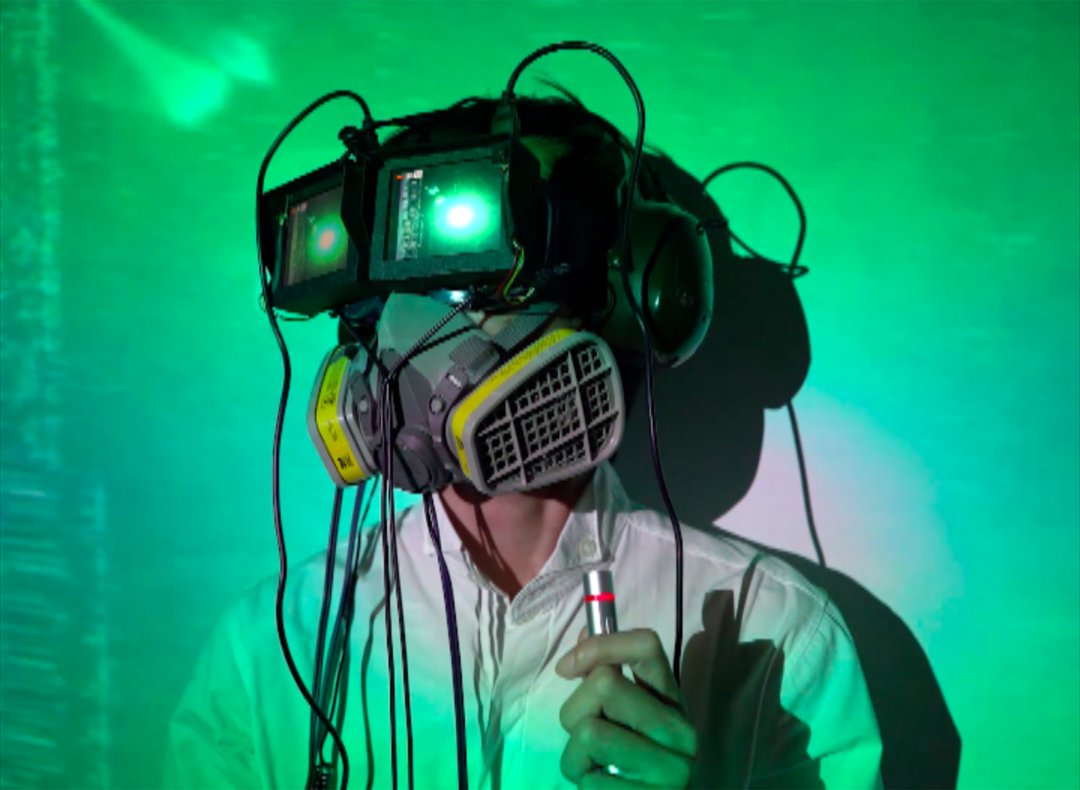This audio-visual performance by Inter-Mission reimaging Lee Kang-so’s Disappearance, Bar in the Gallery in 1973 is quite an unexpectedly chaotic experience for me. It was set up in the staircase of National Gallery Singapore. Without any preliminary knowledge, this was my impression of the performance. A “coffee shop” was strangely set up at the entrance of the performance. Thinking it was the service of the gallery and feeling quite thirsty, I bought a drink from the shop. Several chairs and tables were placed in the middle of many digital devices and screens. The audience was casually sitting around the table. Because there were not enough chairs, some people stood around the stage while some sat on the stairs. However, the audio-visual atmosphere created by the performers was not so casual. The “DJ” at the centre of the stage was constantly producing a strange, echoing electronic noise through a loudspeaker. Cameras were everywhere. Realtime footages were blended with pre-recorded footages, and were displayed on the screens in completely random orders. Then one of the performers wearing the helmet (as shown in the picture) starts walking among the audience. I didn’t even realise the performance had started until people all stopped talking and kept watching the performer while he slowly walked around the room. Because the helmet blocked his vision, he could only use the echo device to avoid the obstacles. Without knowing any backstory of this performance, I felt quite uncomfortable as there were constant noise and no clear objective that I could fixate my eyes on.
The second performer used a recorder and a projector to project his face to different surfaces. He walked up the stairs, and gradually disappear from the main stage. The messages were still not very clear to me, and I started to look around the house to see what people were doing. What I saw was just people quietly taking videos and photos of the performer.
Apart from the confusion, the performance also gave me the feeling the aggressiveness from the audio and video signals. The performers sometimes came very close to the audience, echoing audio or projecting videos on their bodies. The covered eyes with two screens also to me symbolize the blindness of people in the digital age.
After talked with Prof Deja after the performance, I learnt that the performance tried to combine the 1973 installation with modern technologies. In the 1973 installation, Lee tried to convey the idea of although being physically present at the same place, people were in different places due to different mental states. This restaging modernized this idea using electronic devices. To me, it also had the idea that nowadays, people’s states of mind were controlled by the media.
